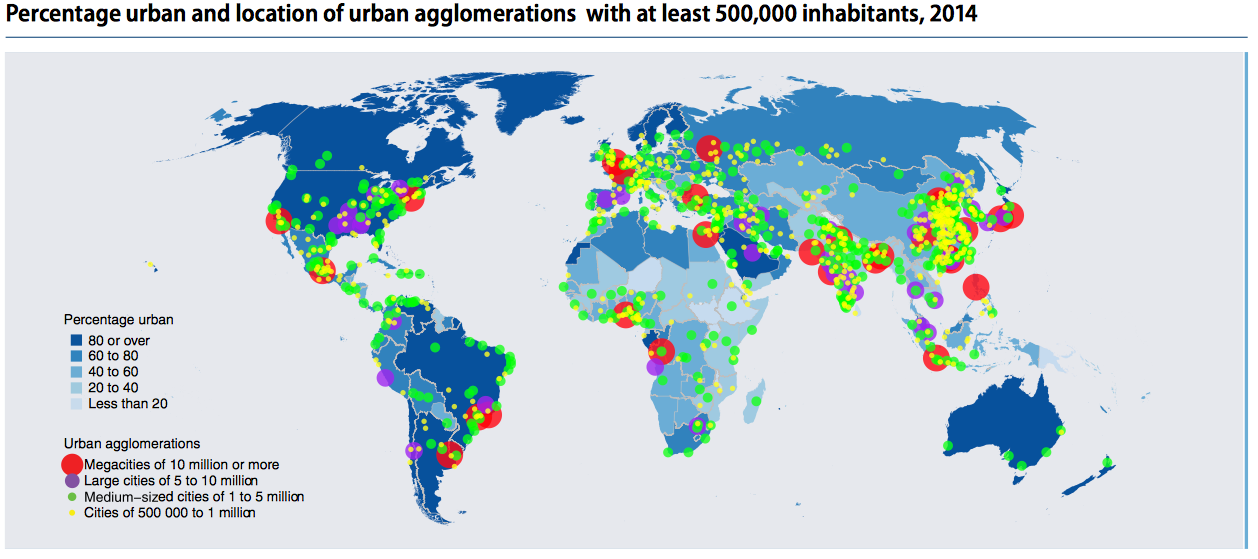The rural population of the world has grown slowly since 1950 and is expected to reach its peak in a few years. The global rural population is now close to 3.4 billion and is expected to decline to 3.2 bil- lion by 2050. Africa and Asia are home to nearly 90 per cent of the world’s rural population. India has the largest rural population (857 million), followed by China (635 million).
The urban population of the world has grown rapidly since 1950, from 746 million to 3.9 billion in 2014. Asia, despite its lower level of urbanization, is home to 53 per cent of the world’s urban population, followed by Europe (14 per cent) and Latin America and the Caribbean (13 per cent).
Just three countries—India, China and Nigeria— together are expected to account for 37 per cent of the projected growth of the world’s urban population between 2014 and 2050. India is projected to add 404 million urban dwellers, China 292 million and Nigeria 212 million.
Close to half of the world’s urban dwellers reside in relatively small settlements of less than 500,000 inhabitants, while only around one in eight live in the 28 mega-cities with more than 10 million inhabitants.
And, very importantly:
As the world continues to urbanize, sustainable development challenges will be increasingly con- centrated in cities, particularly in the lower-middle-income countries where the pace of urbanization is fastest.

No comments:
Post a Comment